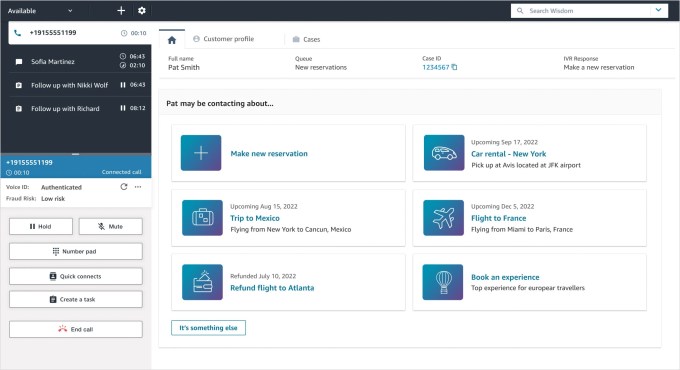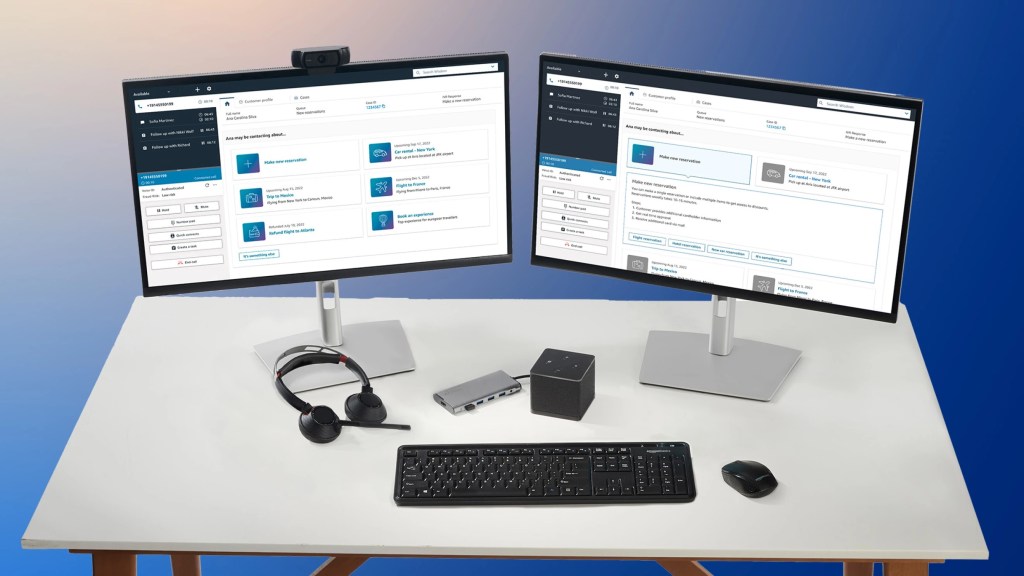Amazon’s new thin client looks just like a Fire TV Cube… and that’s by design. At its AWS re:Ignite conference, the company this morning announced the launch of new $195 devices that allow enterprise users to access virtual desktop environments, like Amazon WorkSpaces, over the internet. The devices are housed in Fire TV Cube hardware — a decision Amazon made to leverage existing expertise from the arm of the retail giant that makes streaming media players.
The company explained its decision to build new hardware came from customer feedback about wanting to lower IT spending by replacing desktops and laptops with less expensive hardware. Today, many of Amazon’s enterprise customers log on to virtual desktops based on AWS End User Computing Services, like Amazon WorkSpaces, WorkSpaces Web or Amazon AppStream, but they tend to do so over desktops or laptops that cost their employer $600 to $1,200 each, Amazon says.
The new thin clients will dramatically undercut that pricing, though they will not have all the capabilities of a dedicated PC. Still, the idea was to offer customers a way to be up and running with new end-user hardware more quickly and at a more cost-effective price point. And when it came time to design the hardware, Amazon decided not to reinvent the wheel.
“We have an entire division in our company that makes devices already,” said Melissa Stein, director of product for End User Computing at AWS, who oversaw the Amazon WorkSpaces Thin Client project, in an announcement about the new technology. “Combining the expertise from the Amazon Devices group with logistics from Amazon Business and the power of the AWS Cloud is a strong combination for customers,” she added.
Though Stein’s team built a new software stack for the device, they didn’t have to build the new hardware, which allowed them to keep costs down.
The resulting thin client offers low-cost computing by offloading much of its processing power to the cloud, specifically the AWS Cloud. That means the device itself does not store data and only runs approved software deployed by IT, for added security. If a device is lost or stolen, company data remains secure in the cloud.
But unlike the Fire TV Cube, where consumers would connect their entertainment devices, like a TV, the thin client’s USB and HDMI ports support the connection of peripherals like dual monitors, a mouse, a keyboard, a camera, a headset and more. Inside, the team built new firmware and software, including an operating system for employees to access their company’s cloud applications.

IT departments can also manage the devices remotely, allowing them to support customers or update the device for a new employee. They can access the AWS Management Console to check on things — like which devices are active, and what software version a device is running. Or, they can remotely reset a device or associate it with a new profile. Plus, administrators can configure groups of devices with their own policies, permissions and access controls, to save time.
The thin clients also support on-device authentication and integration with Amazon’s virtual desktop services, including WorkSpaces for persistent desktops, AppStream for nonpersistent applications and browser-only access with WorkSpaces Web.
The devices will be sold through Amazon’s B2B marketplace and can be ordered preconfigured so customers can be up and running in about five minutes, Amazon promises. That’s faster than the time it takes to configure company laptops or computers, which can often take hours or days of IT’s time, it says.
































Comment